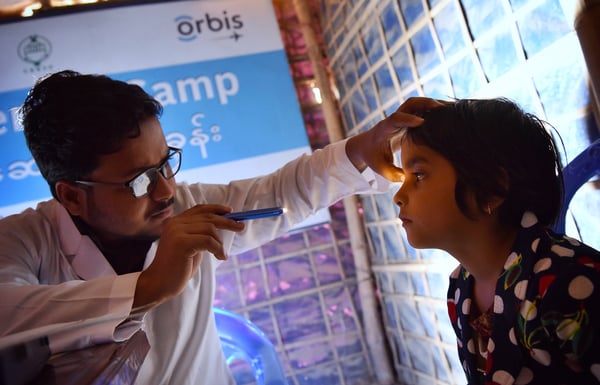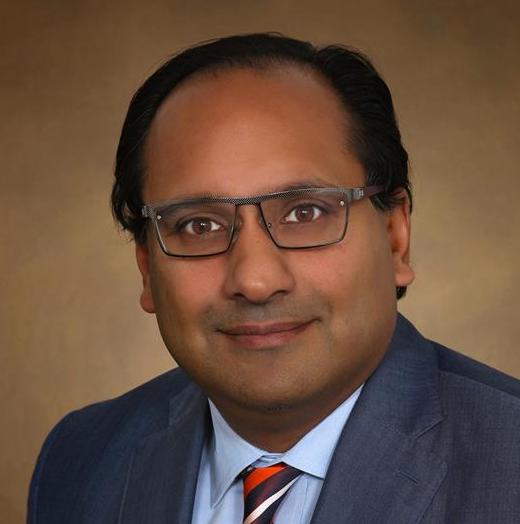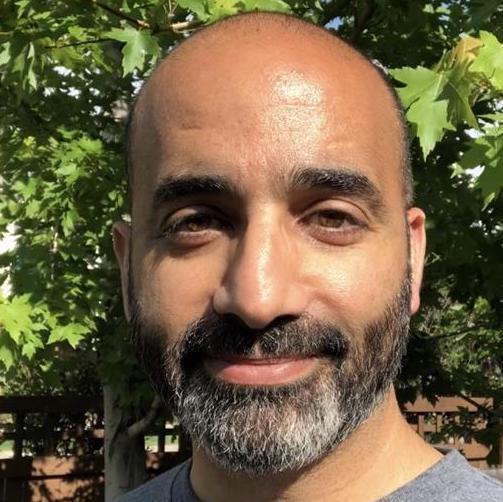Jennifer Patnaik, PhD, researcher at the University of Colorado School of Medicine, received the first-ever Philip and Elaine Ellis New Investigator in Ophthalmology Research Award. The gift provides independent research funding to new ophthalmic investigators.
Philip Ellis, MD, and his late wife, Elaine, created the Philip and Elaine Ellis New Investigator Research Fund in Ophthalmology in 2020 to award a new investigator $40,000 each year for the next five years. Ellis was chair of the University of Colorado Department of Ophthalmology from 1960 to 1995.
With the gift, Patnaik, an assistant professor of epidemiology at the Sue Anschutz-Rodgers Eye Center, will build upon unique, robust research databases in the areas of age-related macular degeneration, retinopathy of prematurity, cataract and glaucoma surgeries, and other pediatric and adult ophthalmic diseases.
“Dr. Patnaik’s research is very diverse. She’s involved in many high impact vision research areas,” says Naresh Mandava, MD, chair of the CU Department of Ophthalmology. “What she’s been able to do with those databases is use big data analyses to identify interesting associations. There are hundreds of data variables on each patient, and in these huge data sets, you can see some associations. Some of these associations that she and the department found have not been described before.”
Anne Lynch, MD, MSPH, director of the ophthalmic epidemiology division, adds, “Dr. Patnaik is on the verge of numerous important discoveries in ophthalmology, and I couldn’t be prouder of her work ethic and accomplishments.”
Patnaik’s recent work has led to dozens of publications, national grants, and novel discoveries.
Big data allows for unique discoveries
One of the most comprehensive databases Patnaik works with encompasses data from more than 13,000 eyes from patients that have visited the Sue Anschutz-Rodgers Eye Center or any of the UCHealth satellite clinics for cataract procedures. Although cataract surgery is the most common procedures performed in the United States – with more than 3 million cataract surgeries performed in the nation each year and more than 20 million around the world – it’s difficult to house all procedural outcome data and identify trends.
“Unfortunately, in this era, electronic medical systems don’t speak to each other, and machines aren’t able to mine data from the electronic medical record, so this requires developing processes that often input manual extraction of data,” Mandava says. “Because of these large databases, we know all aspects of their medical condition, medications as well as their preoperative and postoperative status. We also know details about their surgery and what techniques were used and how the eye responded to those techniques.”
Patnaik’s analyses have not only found that surgeries among the Eye Center’s faculty members have a low complication rate, but she also discovered an association between a common drug called metformin, used to treat diabetes, and a certain complication following cataract surgery.
“YAG, or yttrium aluminum garnet, is a laser procedure that happens very commonly following cataract surgery if there is development of posterior capsule opacification (PCO), which can inhibit vision after cataract surgery,” Patnaik says. “Oftentimes, a YAG procedure needs to be done a couple of years later after the surgery, so we looked at various risk factors for YAG and actually found a protective effect of metformin medication at the time of surgery that may prevent the need for YAG in subsequent years.”
“About 12% of our patients who have cataract surgery will need YAG within three years of their surgery,” she says, “so identifying factors that could prevent this common additional procedure is important.”
“Dr. Patnaik’s research is very diverse. She’s involved in many high impact vision research areas,” says Naresh Mandava, MD, chair of the CU Department of Ophthalmology. “What she’s been able to do with those databases is use big data analyses to identify interesting associations. There are hundreds of data variables on each patient, and in these huge data sets, you can see some associations. Some of these associations that she and the department found have not been described before.”
Her research offers a window into common procedures like cataract surgery as well as relatively uncommon conditions like acanthamoeba keratitis, learning more about rare eye conditions experienced all over the world.
“Big data allows for us to merge many institutions and lots of different patients so that we are able to ask almost any research question that the data will allow,” Patnaik says.
Patnaik is currently researching acanthamoeba keratitis, a rare and potentially blinding eye condition, through a grant she received from the American Academy of Ophthalmology and Research to Prevent Blindness, using the IRIS Registry to better understand and improve diagnosis and treatment of the condition.
Real world solutions for better ophthalmic outcomes
Beyond the CU Anschutz Medical Campus, Patnaik is a strong advocate for people with vision impairments across the world.
“I originally went into the field of public health as an epidemiologist because I love data and I wanted to do a public service, but I wanted to go bigger than the United States,” she says. “I want to help world health by making an impact in developing countries too.”
The award also considered this area of Patnaik’s work, encouraging her volunteer work with Orbis, a global nonprofit organization whose mission is to fight blindness worldwide. She shares this collaboration with Malik Kahook, MD, the Slater Family Endowed Chair in Ophthalmology and vice chair of translational research at the Sue Anschutz-Rodgers Eye Center, to influence future patient care globally.
 A child gets an eye exam at an Orbis vision screening center in Bangladesh. Courtesy: Geoff Oliver Bugbee/Orbis
A child gets an eye exam at an Orbis vision screening center in Bangladesh. Courtesy: Geoff Oliver Bugbee/Orbis
“A big part of what they do is offer vision screening to people who don’t typically have these resources available,” Patnaik says. “They also provide treatment if they need cataract surgery or glasses or whatever the case may be. Then we collect data and analyze it so we are able to examine the impact of the services they offer and the benefits.”
She and Kahook recently worked on assessing the impact of utilizing artificial intelligence in reviewing eye imaging in Rwanda, highlighting benefits particularly in countries that have limited healthcare resources. She has also conducted data analysis to support an association between bus drivers with poor vision in Bangladesh and higher accident rates.
“Accident rates in Bangladesh are really high, and it can have a big impact if we help provide free vision screening and treatment for bus drivers. That was an exciting project that will hopefully raise awareness and decrease the traffic accident rates,” she says.
Patnaik looks forward to using her award to support this work, while also including more translational research with the assistance of her collaborators.
“This award is a real honor, but I wouldn't be successful and as productive without the partnership of the clinicians and the basic scientists,” she says. “To analyze data and make the findings meaningful, collaboration is key in order to turn our research into enhanced clinical practice.”






